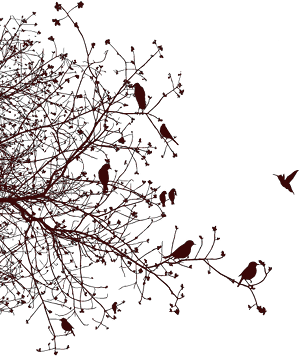Where is the cow whose milk we drink?
Posted on July 19, 2011
The advent of factory farming has driven most small family farms out of business at an alarming rate, replacing them with massive industrial operations where animals suffer more, workers are mistreated, and the environmental costs are ignored. The rise of mega-dairies is probably most emblematic of this trend that started over 60 years ago. I was curious if this trend continues today in the midst of a rising sustainable food movement. Thankfully, the USDA collects and reports annually on the number of dairy operations and the distribution of their sizes.
- E. Marcus. Meat Market: Animals, Ethics, and Money. Brio Press, 2005. (link, accessed December 31, 2012)
- USDA, National Agricultural Statistics Service. Farms, Land in Farms, and Livestock Operations: 2010 Summary. February 2011. (link, accessed December 31, 2012)
- USDA, National Agricultural Statistics Service. Agricultural Statistics Annuals 1994-2009. (link, accessed December 31, 2012)
Quoting USDA publications, Erik Marcus in Meat Market wrote: “Between 1950 and 1980, the number of U.S. farms with dairy cows fell 92 percent, from 3.65 million to 278,000.” This represents a decline of about 8.2% per year. It turns out that during the last fifteen years, the average decline per year has reduced to about 5.6%. In fact, during the last five years, the average decline has been only about 4.4%. So, the rate of the decline in the number of dairy farms is reducing—very slowly—but the decline itself is showing no sign of stopping. The decline has obviously had an impact on the lives of small family farmers, but what about its impact on cows? Where is the cow whose milk we are drinking—in a small family farm or a large mega-dairy?
To help answer this question, I designated two categories of dairy operations: small operations with fewer than 100 cows and large operations with 1000 cows or more. USDA did not start reporting the number of dairy operations with 1000 or more cows until 1999, but its 1994 Agricultural Statistics report indicates that there were 0 (yes, zero!) operations with 1000 or more cows in 1992. So, our plot begins in 1992 with no data for large operations during 1993-1998. Also, there is data available on small operations with fewer than 100 cows only beginning in 1994. The following plots the percentage of all cows used for their milk in either a small dairy operation with fewer than 100 cows or a large operation with 1000 or more cows.
So, yes, more cows are now in huge industrial operations than ever before. The percentage of cows in large operations with 1000 or more cows has risen steadily from 0 in 1992 to 44% in 2010. That is almost every other cow! The trend is slowing down, but dismally slowly for the thirteen million cows alive today trapped in the U.S. dairy industry. Cow milk cartons may try to impress upon us the romantic image of dairy farms in pleasant bucolic settings, but it is a foul distortion of the truth. When we buy and drink cow’s milk, there is less than a 1-in-5 chance that the cow whose milk we are drinking is in a small farm with fewer than 100 cows. In fact, there is less than a 1-in-50 chance that she is in a small farm with fewer than 30 cows. But, there is almost a 1-in-2 chance that she is in some large industrial dairy farm such as this one or this one or this one.
py3.9.4 (default, Apr 5 2021, 09:56:39) [GCC 7.5.0]Django(3, 2, 1, 'final', 0)






Comments
Adam
July 22, 2011, 1:48 a.m.
Interesting post. Can you provide a link to the data?
I do have one minor point of disagreement with the wording in the last paragraph. You write, for example, "When we buy and drink cow's milk, there is less than a 1-in-5 chance that the cow whose milk we are drinking is in a small farm with fewer than 100 cows."
That's not exactly what the data show, unless we assume that the cows at the different sized dairies are equally productive.
To see why this could matter, consider for example the (absurd) situation in which each cow at the small dairies produces 20 liters of milk per day, but all of the cows at larger dairies collectively produce one milliliter of milk. In this scenario, very nearly 100% of milk would come from cows at small dairies, and none would come from larger dairies. In other words, if these were the productivity levels, when we drink milk, there would be nearly a 100% chance that it came from a smaller dairy.
My suspicion, however, is that my contrived scenario is skewed in the direction opposite reality. Since large dairies and high production are both symptoms of more industrialized animal agriculture, I would guess that the cows on large farms are actually producing more milk than cows on smaller farms. It may well be the case that the chance is greater than 50% that a given glass of milk comes from a cow at a mega-dairy. Of course, there is probably data out there somewhere.
The ethical implications of this point are probably another discussion entirely.
Harish
July 23, 2011, 10:16 a.m.
Adam, you are absolutely right that the percentage of milk production per dairy size group (as opposed to percentage of cows per dairy size group) will yield a better estimate of the answer to the question: where is the cow whose milk you are drinking? However, the USDA has not published production statistics per size group for all of the years I wanted to include in my post and so, I decided to err on the conservative side and consider only the percentage of cows. You are absolutely right that the production per cow in large dairies is higher and so my numbers are conservative. But, the difference is not large. For example, instead of 43.1% in 2009, the number would have been 46.9%. It would still be almost 1-in-2 chance but not more that the milk is from a mega-dairy.
Regarding the link to the source, my data is compiled from the 16 annual USDA reports here.
Harish
Sept. 5, 2011, 8:20 a.m.
I have now added links to the raw data sources in this post and in other posts as well.
Additional comments via Facebook